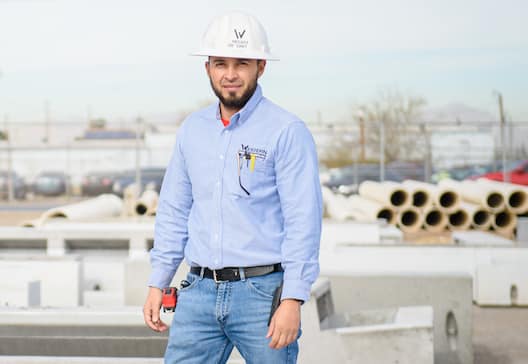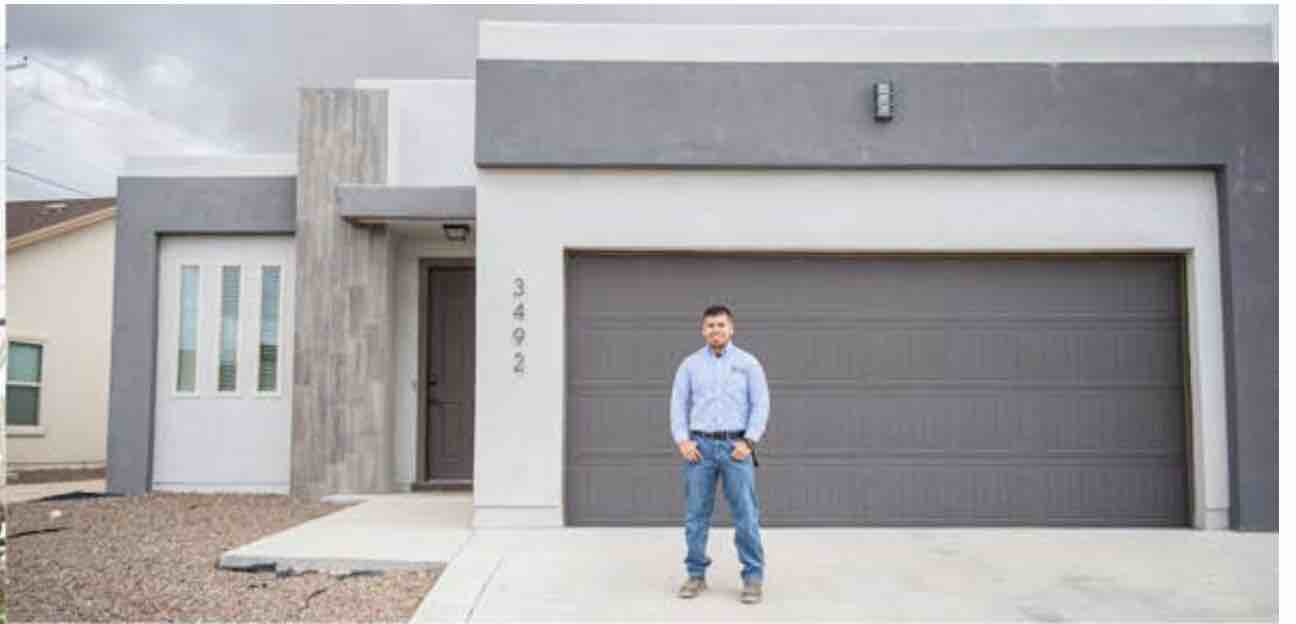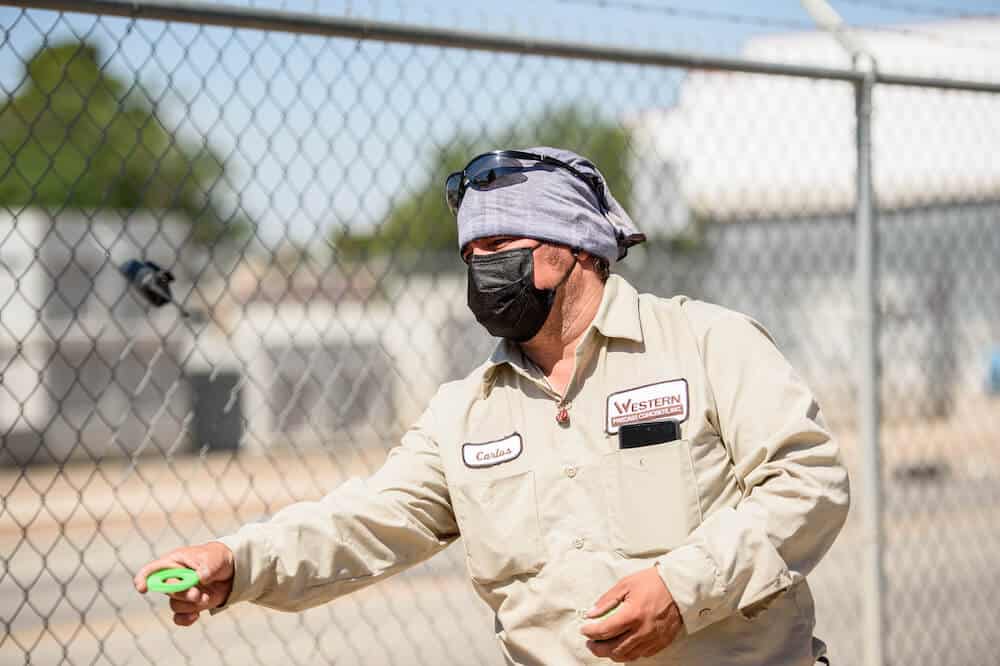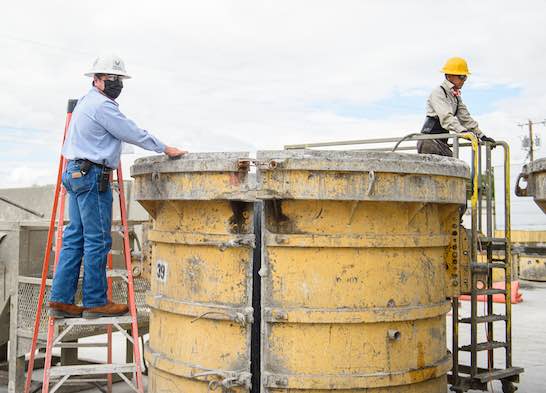Cracks occur on concrete members no matter if they are being cast on construction sites, cast in place, or in a precast concrete plant. Cracking occurs due to many factors, for example, rapid drying of concrete, too much water in the mix, shrinkage which happens when the concrete hardens and dries without sufficient moisture to help the hydration rate, stripping members before meeting strength, mishandling of the product, etc. It is important to cover the concrete unit with a curing blanket once it has been cast to help maintain the heat and moisture created by the concrete in the first stage of the curing process. By doing this it minimizes the risk of cracks on the unit and helps to obtain the strength required. The size of the crack will determine the proper repair procedure which can be found in the concrete repair manual detailing the necessary steps to seal the crack. Some of the most common are epoxy injection, crack sealant, and gravity sealer. Sealing the crack prevents the reinforced steel from corrosion and concrete from expanding due to infiltration of water, chlorides, and other contaminants.
Adrian Moreno – Quality Control Assistant Director
Grietas en el Hormigón
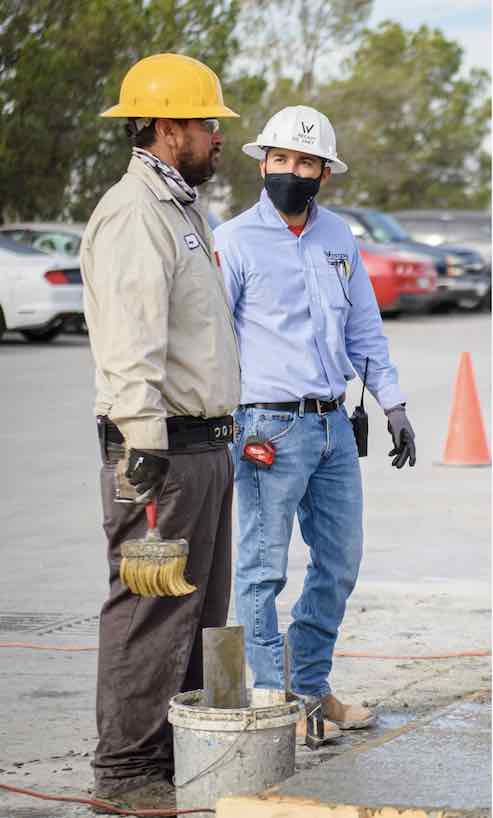
Cracks occur on concrete members no matter if they are being cast on construction sites, cast in place or in a precast concrete plant. Cracking occurs due to many factors, for example: rapid drying of concrete, too much water in the mix, shrinkage which happens when concrete hardens and dries without sufficient moisture to help the hydration rate, stripping members before meeting strength, mishandling of the product, etc. It is important to cover the concrete unit with a curing blanket once it has been cast to help maintain the heat and moisture created by the concrete in the first stage of the curing process. By doing this it minimizes the risk of cracks on the unit and helps to obtain the strength required. The size of the crack will determine the proper repair procedure which can be found in the concrete repair manual detailing the necessary steps to seal the crack. Some of the most common are epoxy injection, crack sealant, and gravity sealer. Sealing the crack prevents the reinforced steel from corrosion and concrete from expanding due infiltration of water, chlorides, and other contaminants.
Las grietas se producen en elementos de hormigón sin importar si se estan colando en sitios de construcción, colados en el lugar o en una planta de hormigón prefabricado. El agrietamiento ocurre debido a muchos factores, por ejemplo: secado rapido del cementa, demasiada agua en la mezcla, contracción que ocurre cuando el cementa se resiste y se seca sin suficiente humedad para ayudar a la tasa de hidratación, desprendimiento de elementos antes de alcanzar la resistencia, mal manejo del producto, etc. Es importante cubrir la unidad de cementa con una manta de curado una vez que se haya colado para ayudar a mantener el calor y la humedad creados por el cementa en la primera etapa del proceso de curado. Al hacerlo, minimice el riesgo de grietas en la unidad y ayude a obtener la resistencia requerida. El tamano de la grieta determinara el procedimiento de reparación adecuado que se puede encontrar en el manual de reparaci6n de cementa que detalla los pasos necesarios para sellar la grieta. Algunos de los mas comunes son la inyección de epoxi, el sellador de grietas y el sellador por gravedad. El sellado de la grieta evita que el acero reforzado se corroa y que el cementa se expanda debido a la infiltración de agua, cloruros y otros contaminantes.
Adrian Moreno – Subdirector de Control de Calidad

